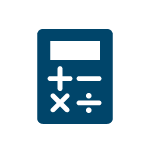REFERRAL PERKS®
Earn $100* for you and your friend for every successful referral.
Learn how an FHSA helps you save for a mortgage faster.
Learn which savings option is the best for your financial goals.
Explore this step-by-step complete guide to starting a business in British Columbia.
We’ve rounded up 10 of the most common scams — along with ways to identify and outsmart them.
We use cookies to personalize your browsing experience, save your preferences and analyze our traffic to improve features. By using our website you agree to our Cookie Policy.

With the average price of a home on Vancouver Island sitting at over $730,000, it’s no longer a straight line to saving your down payment. It takes strategic decisions, diligence, and patience to save up for your first home.
When you look at it straight on, saving for a down payment seems like a downright impossible task. But, if you optimize your contributions, know where to combine them across several plans for tax efficiency, you can make your down payment savings work harder for you.
The Government of Canada has introduced new changes and savings accounts to help first time homebuyers get into the market. In this article, we’ll explain how to get the most out of the latest new plan: the First Home Savings Account.
Here’s how to supercharge your first home savings strategy using the FHSA.
First, let’s look closer at the FHSA. This account was introduced in 2023 and was designed with strategic benefits that can help you save faster than ever before. With this account, prospective home buyers can build their savings up to $40,000 tax-free for the purchase of their first home.
The biggest benefit of your FHSA is that it combines the best features of a TFSA and an RRSP — tax-free savings and withdrawals as well as tax deductions for your contributions, making it a great way to start saving for your down payment (and with an FHSA, you have 15 years to save!)
These features act like a hybrid of the tax-free savings and withdrawals of the TFSA with the tax deductions you get with your RRSP contributions, making it a great way to start saving for your down payment.
With this account, you can not only save and withdraw your money tax-free for a home purchase, but there’s a third bonus: any investment growth in your account also won’t be taxed.
Plus, when you withdraw money from your FHSA to buy your first home, you won’t have to repay the money, unlike when you use the RRSP home buyers’ plan.
While you get $8,000 in contribution room each year when you open your FHSA, you can also carry it forward to the next year if you don’t use it — giving you even more saving power.
Depending on your risk tolerance and savings strategy, your advisor will help you explore savings options that will help you accelerate your home ownership goals.
Each year, you’ll get $8,000 worth of new contribution room in your FHSA (up to the lifetime maximum of $40,000). One way to ensure you use this account to its full potential is to set up regular, automatic contributions to your FHSA each month, or each pay period. Plus, you can take advantage of the power of your savings compounding over time, as well.
Remember: Keep your contribution limits in mind
With all registered accounts (such as FHSAs, RRSPs and TFSAs), going over the annual contribution limit comes at a price — a 1% tax per month on the amount you’ve overcontributed.
Get more info on how to know your RRSP, TFSA, and FHSA contribution limits.
Just like with RRSP contributions, money you put into your FHSA is tax-deductible. This means it lowers your taxable income and can either help lower your overall tax bill or boost your tax refund. Plus, you can also carry this deduction forward to a future tax year.
Re-contributing this tax refund back into your FHSA is a great way to save even more tax-free for your down payment.
Want a useful snapshot of how much tax you might save by contributing to an FHSA? Check out the Government of Canada’s Tax-Free Home Savings Account Estimator, and look at the calculations for BC residents.

Pro-Tip: Want a useful snapshot of how much tax you might save by contributing to an FHSA?
Check out the Government of Canada’s Tax-Free Home Savings Account Estimator, and look at the calculations for BC residents.
Want to know how hard your other savings accounts are working for you? Use our Tax-Free Savings Account Calculator.
Leveraging your savings from both your FHSA and your RRSP home buyers’ plan is a great way to gain extra purchasing power when you’re buying your first home.
When you buy your first home, you can withdraw from your RRSPs under the home buyers plan and from your FHSAs for the same qualifying home.
For anyone partnering up to buy their first home together, these savings pack some serious purchasing power; you can each contribute to your own plans and use this money as a down payment for the same home.
Blair and Eva are looking to buy their first home in Ladysmith next year.
They each opened an FHSA in 2023 and contributed the maximum $8,000 that year, and $8,000 each in 2024, accumulating $1,500 in growth from the investments they chose along the way.
They also have RRSPs and plan to withdraw $20,000 each from their accounts through the RRSP Home Buyers’ Plan, which they will repay over 15 years.

Blair and Eva will then be able to withdraw:
| FHSAs | RRSPs |
| =$32,000 + $1,500 in growth | =$40,000 from the home buyer's plan |
| =$73,500 for the down payment | |
You don’t need to be sitting on a pile of money to start a smart saving strategy. Even if you are short on funds this year, just opening your FHSA is a great strategic move towards saving for your first home. Why? Your FHSA ‘contribution room’ starts building once you open your account.
Just by opening your account, you’ve built up $8,000 in contribution room for 2024. Even if you don’t use it this year, you can carry it forward to next year, which means you will have $16,000 in FHSA room for 2025. Sounds like a win-win to us!
We can open your new FHSA through our trusted financial partner, Aviso Wealth. It’s as easy as meeting with us so we can learn more about your situation, what solution may work best, and provide recommendations that could work for you. All you need to bring with you is your social insurance number, and your date of birth.
Your advisor will help you explore savings options for your FHSA — you can hold anything from cash to GICs, stocks, mutual funds or ETFs.
But before you get set to open your FHSA, it’s important to know whether you are eligible! You can open an FHSA in BC if you are:
Once you turn 71, your unused FHSA savings will transfer to a Registered Retirement Income Fund (RRIF).
Here’s how the Government of Canada determines who is and isn’t a resident of Canada.
This means you or your spouse haven’t lived in a ‘qualifying home’ that you owned or jointly owned this year or in the last four years.
Want to open your FHSA today? Here's how.
You are solely responsible for confirming that your FHSA, TFSA and RRSP contributions are within your allowable limits set by Canada Revenue Agency (CRA). All rules and contribution limits for FHSAs are set out by CRA and applicable legislation apply. Information about FHSAs is based on what is currently available from the Canadian government and may be subject to change.
Mutual funds and other securities are offered through Aviso Wealth, a division of Aviso Financial Inc. Online brokerage services are offered through Qtrade Direct Investing, a division of Aviso Financial Inc.
Everything is easier with a little help.
We acknowledge that we have the privilege of doing business on the traditional and unceded territory of First Nations communities.
© First West Credit Union. All rights reserved.
Proudly Canadian